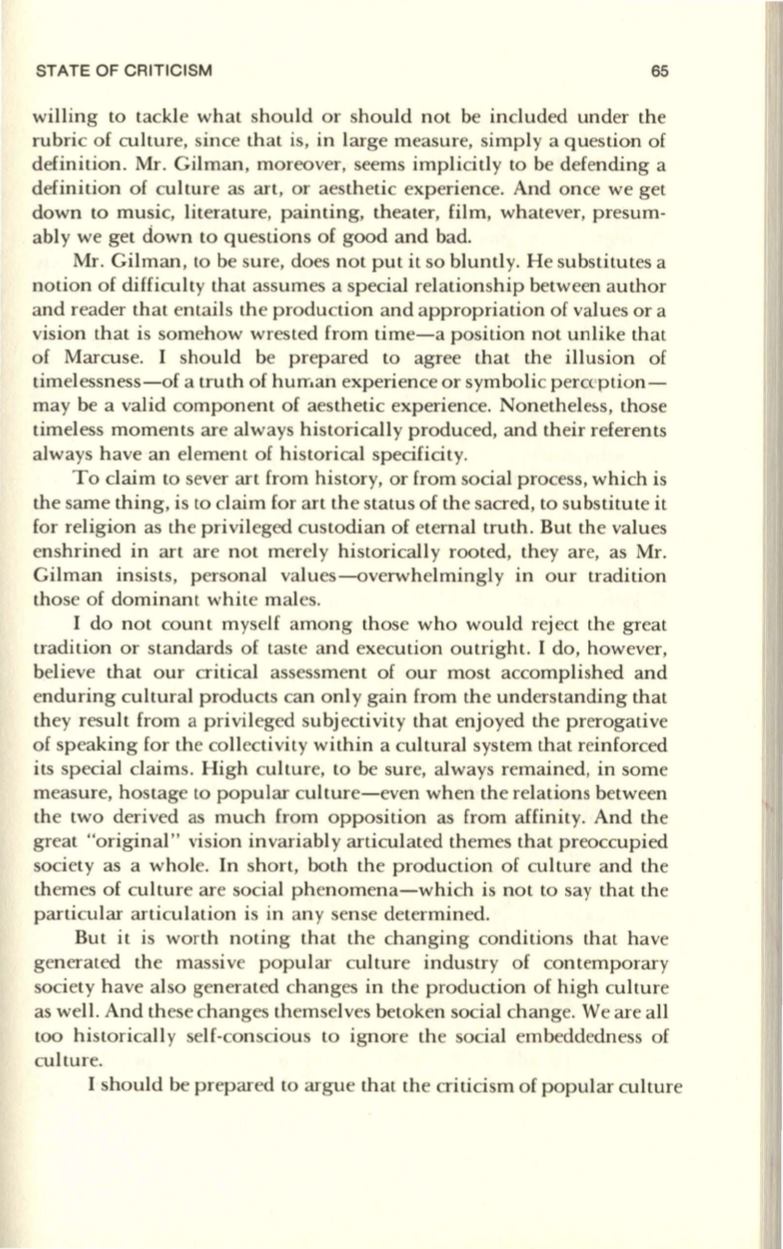
STATE OF CRITICISM
65
willing to tackle what should or should not be included under the
rubric of culture, since that is, in large measure, simply a question of
definition. Mr. Gilman, moreover, seems implicitly to be defending a
definition of culture as art, or aesthetic experience. And once we get
down to music, literature, painting, theater, film, whatever, presum–
ably we get down to questions of good and bad.
Mr. Gilman, to be sure, does not put it so bluntly. He substitutes a
notion of difficulty that assumes a special relationship between author
and reader that entails the production and appropriation of values or a
vision that is somehow wrested from time-a position not unlike that
of Marcuse. I should be prepared to agree that the illusion of
timelessness-of a truth of hurr,an experience or symbolic perception–
may be a valid component of aesthetic experience.
Nonethele~s,
those
timeless moments are always historically produced, and their referents
always have an element of historical specificity.
To claim to sever art from history, or from social process, which is
the same thing, is to claim for art the status of the sacred, to substitute it
for religion as the privileged custodian of eternal truth. But the values
enshrined in art are not merely historically rooted, they are, as Mr.
Gilman insists, personal values-overwhelmingly in our tradition
those of dominant white males.
I do not count myself among those who would reject the great
tradition or standards of taste and execution outright. I do, however,
believe that our critical assessment of our most accomplished and
enduring cultural products can only gain from the understanding that
they result from a privileged subjectivity that enjoyed the prerogative
of speaking for the collectivity within a cultural system that reinforced
its special claims. High culture, to be sure, always remained, in some
measure, hostage
to
popular culture-even when the relations between
the two derived as much from opposition as from affinity. And the
great "original" vision invariably articulated themes that preoccupied
society as a whole. In short, both the production of culture and the
themes of culture are social phenomena-which is not to say that the
particular articulation is in any sense determined.
But it is worth noting that the changing conditions that have
generated the massive popular culture industry of contemporary
society have also generated changes in the production of high culture
as well. And these changes themselves betoken social change. We are all
too historically self-conscious to ignore the social embeddedness of
culture.
I should be prepared to argue that the criticism of popular culture


